28 de noviembre 2023
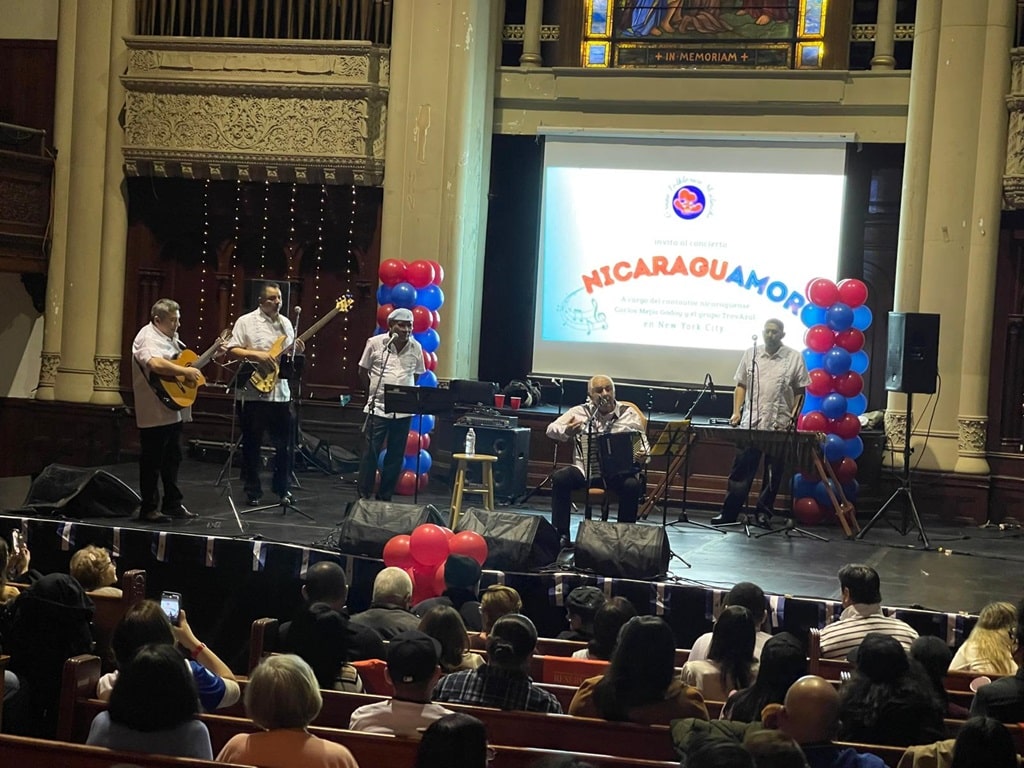
“NicaraguAmor” Cultural Caravan for Nicaraguans in the USA

PUBLICIDAD 1M
PUBLICIDAD 4D
PUBLICIDAD 5D
Between January and September 2023, 71 Nicaraguans have been murdered in Costa Rica, experiencing an unprecedented crisis of citizen insecurity
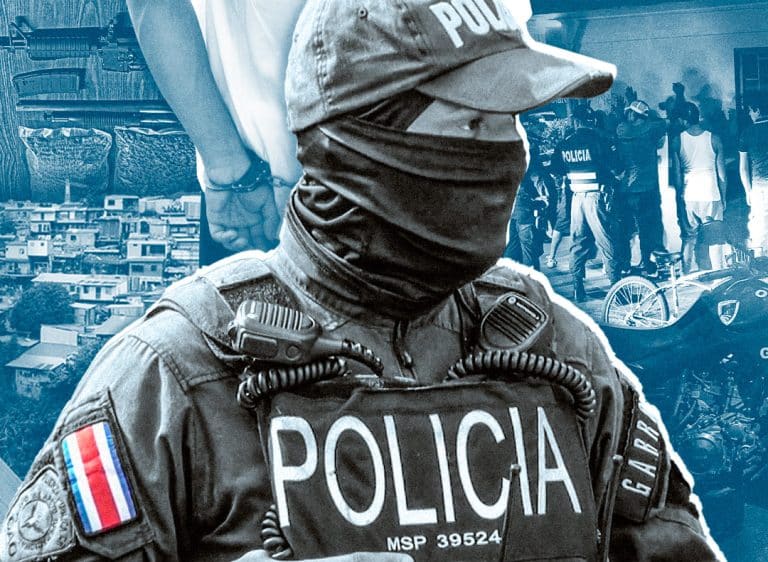
Natalia had heard distant gunshots almost daily. Sometimes close by, but always at night. That midday, the blast interrupted the daytime rush and her hurried routine of getting her six-year-old daughter ready for preschool.
When she stepped outside and saw a bloodied young man on the sidewalk, his legs blown off by bullets, she was grateful she had taken a few minutes longer to leave the house. She was saved from witnessing a scene that is becoming more and more common in Costa Rica: a man on a motorcycle was passing through the area with the aim of shooting the victim, who – this time – had survived.
Natalia is a young Nicaraguan woman who emigrated in March 2023 and lives in Rincón Grande, a settlement in Pavas, one of the districts of San José where the most murders have occurred this year, which without having concluded, is already the most violent year in Costa Rica's history.
In the midst of an unprecedented insecurity crisis in the “Pura Vida” nation, Nicaraguans - who are the largest foreign population in the country - are also suffering the consequences of the penetration of drug trafficking, and are frightened to see Costa Rica lose the peace for which it was known in Central America.

Costa Rica: 824 violent homicides in eleven months of 2023
From January 1 to November 22, 2023, Costa Rica reported 824 intentional homicides, mostly in the provinces of Limón, in the Caribbean; San José, in the Central Valley; and Puntarenas, in the Pacific. By the end of the year, there will be an estimated 900 violent deaths and a homicide rate of 17 per 100,000 inhabitants.
Local media report shootings in places where they did not occur before: outside a hospital, near a school, or on a soccer field. Teachers in public schools conduct drills of shootings with their students. Sixty-eight percent of intentional homicides are due to settling of scores or hired killings, a symptom of the struggle between gangs seeking to move drugs and control territories.
While the authorities engage in discussions about blame and possible solutions, the population perceives insecurity as the country's main problem, according to the most recent public opinion survey.
The Nicaraguan migrant population, which constitutes approximately 10% of the population, is no stranger to the problem. On the contrary, a good part of them live close to the violence of drug trafficking in vulnerable and high-risk areas.
CONFIDENCIAL's Nicas Migrantes spoke with Nicaraguans directly affected by insecurity, spoke with specialists, visited some of the districts of the capital with the highest number of intentional homicides, and analyzed official statistics to understand the exposure of this population as victims and perpetrators.
The Nicaraguans who agreed to speak asked to withhold their names, out of fear of reprisals from the gangs with whom they are forced to cohabit.
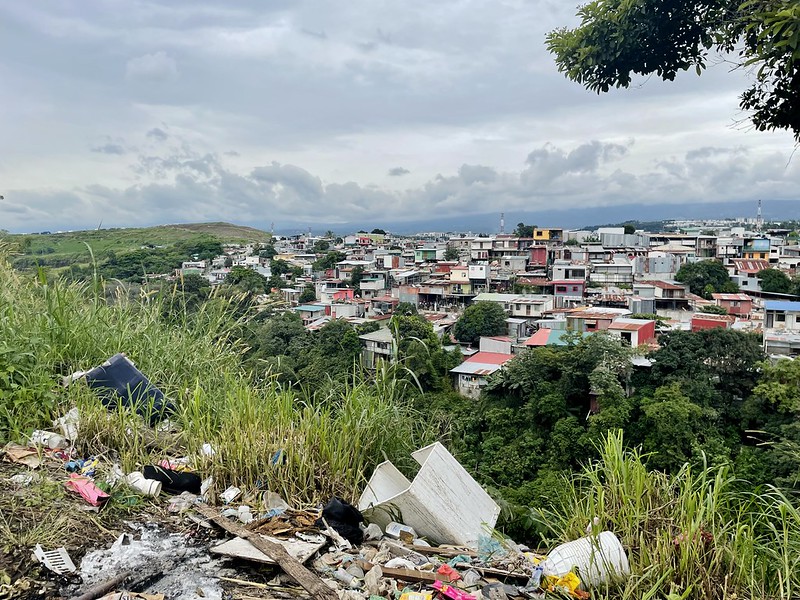
Between gunfire and drug bunkers
“I fled from the police, because of the repression and persecution; and now, here, nobody is chasing me, but I am afraid of crime,” exclaims Natalia.
She lived in Managua, in Americas 1, a neighborhood near the Polytechnic University of Nicaragua (Upoli), a hot spot of the Civic Rebellion of April 2018, where university students barricaded themselves demanding the end of state repression and the departure from power of Daniel Ortega and Rosario Murillo.
She did not hesitate to join the massive mobilizations during those days, but it cost her the harassment of her Sandinista neighbors and of the Police who threatened to imprison her, as they have done with hundreds of opponents turned into political prisoners of the regime.
So she left for Costa Rica with her husband and daughter. They entered through a “blind spot” at the border and requested refuge. The first few days they slept outdoors, then in a shelter, and finally they arrived at Rincón Grande de Pavas, the only place they could afford: 90,000 colones (about $170) for a room where they slept on the floor.
But Natalia did not know that in Rincón Grande she would have to resign herself to living among bullets and “bunkers,” as they call drug dealers in Costa Rica. The area is even marked on Google Maps as “Precarious Drug Dealership Nueva Esperanza Pavas.”
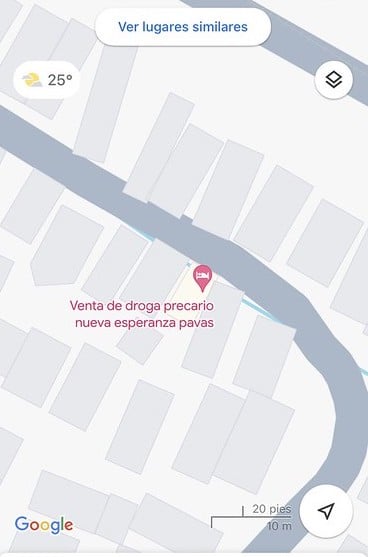
The first few days, Natalia was very frightened when she heard the gunshots, which at first she mistook for fireworks. “I have seen with my own eyes how drugs are sold, how money is passed around, the little bags, how cars arrive here. I've just brought my daughter home from kindergarten and they are there, on the street,” she says. Her daughter also asks her what to do when gunshots ring out. “It hurts me, honestly, because I took her out of Nicaragua for a better future. And I'm seeing that she's not going to have a good future if we continue like this,” she says.
"We tried to go somewhere else, but we can't afford it," she says. Her husband earns 350,000 colones a month (about US$660) but has no formal or permanent job. He works in construction, in temporary projects, and it has been difficult for him to get his work permit because of the new requirements that the immigration authorities ask of refugee applicants.
That is the reality of 77% of Nicaraguan migrants who arrived in Costa Rica after 2018, following the outbreak of the socio-political crisis in Nicaragua. Most earn less than 450 000 colones per month ($850), according to a survey conducted in 2022 by CONFIDENCIAL and Inter-American Dialogue. With that income, they must afford the high prices of rents in cuarterías (a group of rooms) and houses in dangerous areas.
Currently, there are no statistics on which are the districts with the highest concentration of migrant population in Costa Rica, but among organizations and Nicaraguan migrants themselves, Pavas, Hatillo, La Carpio (in Uruca), Desamparados and Alajuelita are identified as districts of the capital with a stigma of being dangerous.
Statistics for 2022 and 2023 from the Judicial Investigation Organism (OIJ) indicate that the majority of intentional homicides in the canton of San José occurred in some of these districts: Pavas, Hatillo, and Uruca.
Harold Villegas, professor at the University of Costa Rica (UCR) and specialist in migration and refugee issues, points out that, in Costa Rica, “slums” or informal settlements have grown in the last 15 years, especially in the Greater Metropolitan Area. They have grown from about 400 to 750, and part of their inhabitants are migrants who settle in urban areas in search of employment.
Natalia is not the only one who fears for her daughter. Alejandra is another Nicaraguan who lives in Pavas, in an area controlled by the criminal gang "Los Diablos". Not long ago she had to live next to a “bunker.”
She was looking for a place for her and her four children aged 14, 11, 4, and 1 year old. One day police officers came to raid her house. Alejandra believes it was a mistake, because of the drug sales next door. "It was horrible, they made a mess in the house, they humiliated me. They didn't find anything, so they didn't take me to jail, but they reported me to PANI," she says. The National Children's Board (PANI) arrived a few days later to investigate why there were children living next to a “bunker”, but fortunately, she recalls, they did not take her children away from her.
Now, Alejandra lives in another house, still in Pavas. She pays 100,000 colones (US$190) in rent, which she makes up by cleaning, selling food, and other odd jobs. The one who worries her most is her 14-year-old daughter, who told her that a student at her school offered her marijuana, cocaine, and clonazepam, a drug that is combined with other drugs.
This is a trend that challenges organizations. Esteban Carmiol, of Fundación Acción Joven, has been working closely with Costa Rica's public education system for thirteen years and says that they used to find adolescents and young people using drugs, but in the last year and a half, they have found “young people actively selling inside the school.”
The gang leaders, Carmiol explains, recruit these minors and tell them not to leave the school, but to take advantage of the opportunity to sell there.

Alejandra confirms that there are teenagers selling drugs in Pavas. She also believes that Nicaraguans are more vulnerable. “They always use the Nicaraguan as 'bait'. We are more vulnerable. There are people who go to work for these people (the gangs) out of necessity. Maybe they are people (migrants) who are not here legally, they don't have their documents to work, so they look for those options,” she says.
There are women, she adds, who work as “bells.” "They are people who walk in the street to warn if a patrol car is going to pass by," she explains.
Carmiol agrees with Alejandra. Young migrants may be more likely to be involved in these criminal activities, not because of their nationality, but because of the poverty in which they live, which can be exacerbated when they are undocumented in the country.
“It is a matter of need. Probably, the migrant population has more difficulties in accessing work, in accessing study, in accessing health care.” Some young migrants who finish high school do not obtain their high school diplomas because they do not have their papers in order. This makes it difficult for them to find employment and prevents them from pursuing a technical or professional career.
For Alejandra, neighbors in these places do not report drug traffickers out of fear and because they feel there is no forceful response from the authorities. “The police are either infiltrated or colluding,” she says, something that is echoed by another source, a resident of another district with high crime rates. They wonder how the gangs know in advance when a police operation will occur.
The Press Office of the Ministry of Public Security told CONFIDENCIAL that it cannot refer to anonymous and informal denunciations, and invited those affected to call 1176, a telephone line to formally denounce without the person having to give his or her name.
During the day, in the streets of populous districts, such as Pavas or Uruca, people circulate with a certain degree of normality. There are people selling and buying the day's food, children going to school, and vehicles passing by. Some see with curiosity the small camera with which we take some photos and videos, and approach us to warn us to put it away.
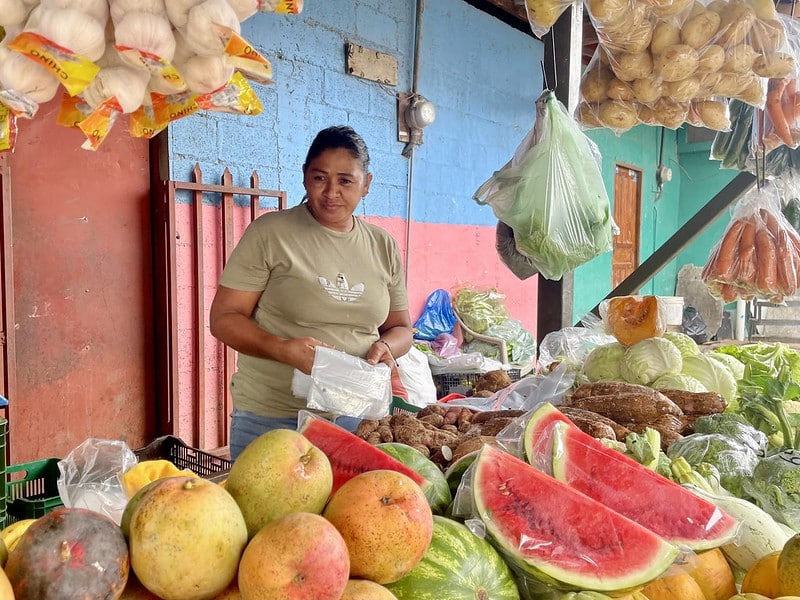
All conversations flow, except on the subject of insecurity in the neighborhood. Here the answers become elusive. Many limit themselves to saying that "things are the same as always", others complain about the shootings, but fail to mention the cause. Some dare to talk in detail, on the condition, however, that they are not mentioned or photographed.
In La Carpio, Eric says that now he feels slightly safer, because at least the criminals "respect" the neighbors, that is, they don't rob people from the neighborhood. However, he warns that drugs are circulating much more than before. "I have many friends who have fallen [into bad habits], as a result of how easy it is now to obtain it. I have three friends who have already become drug addicts, in other words, they have already fallen into it," he says with regret.
Villegas explains that nowadays there is a greater circulation of drugs that stay in Costa Rican territory. "Before, Costa Rica was only a transit country for cocaine, now the gangs pay local drug dealers in precarious areas with drugs," he says.
Eric also laments the increase in collateral victims. With so many shootings in public places, it is no longer just between criminals. "There have been many wounded and, even, innocent people coming from work, and they are already shot. I have a friend who was shot three times in the spine during a shooting at the third (La Carpio bus stop). He was waiting for the bus to go to work. He was injured for life".
According to OIJ statistics, of the intentional homicides that occurred until September 2023, 5% of the victims were collateral. In 2022 they were 2% and in 2021 1%.
In local newscasts and newspapers, the coverage of these types of events is intense and has an impact on the feelings of the population. "The feeling you get is that there is violence and criminality everywhere," says Nicaraguan sociologist, a specialist in security issues, and director of the Center for Transdisciplinary Studies of Central America (Cetcam), Elvira Cuadra. The Nicaraguan media also report and highlight the cases of violent deaths of Nicaraguans in Costa Rica, and of detainees for various crimes.
Official statistics show that between January and September 2023, 71 Nicaraguans have been victims of intentional homicides in Costa Rica, out of a total of 571, or 10%. The percentage remains similar, with variations of just one point, between 2017 and 2022.
Between January and September 2023, Nicaraguan collateral victims are 12%. In 2022 it was 27%, when an entire family was murdered in Santa Cruz de Guanacaste. The victims, originally from Estelí, had been in Costa Rica for eight days looking for work when they were attacked by two men who shot at the house they were renting. Neighbors indicated that the previous tenants were selling drugs and were the real target of the perpetrators.
Regarding the involvement of Nicaraguans in crimes for which they serve sentences in Costa Rica, prison population data show that Nicaraguans make up 11% of the total, a consistent percentage between 2018 and 2023.
Nicaraguans imprisoned for crimes such as illegal possession of weapons, homicides and drug trafficking hover between 10% and 13% between 2017 and 2023. Currently, there are 1703 Nicaraguan prisoners in Costa Rica.
Statistics reflect that Nicaraguans, both as victims and perpetrators, are a representative percentage with respect to the total number of Nicaraguans living in Costa Rica. Estimates by specialists in migration issues indicate that the foreign population in Costa Rica, the vast majority of which is Nicaraguan, is between 8% and 11%.
These percentages are also constant over the years, despite the increase in the Nicaraguan population since 2018, with the arrival of tens of thousands of refugee applicants.
Marcos, originally from Somotillo, Chinandega, emigrated to Costa Rica eight years ago. For him, the current insecurity crisis is alarming. He recalls that, having just arrived, he went to a work appointment and in broad daylight came under crossfire in an area close to where he lives, in San José. But these types of events did not happen as often or in as many places as they do now, he stresses. He also compares the Costa Rican situation with that of Nicaragua.
Neither Marcos, Natalia nor Alejandra think that in Nicaragua there are these shootings that they see frequently in Costa Rica.
Cuadra, the Nicaraguan security specialist exiled in Costa Rica, explains that it is difficult to make an in-depth comparison of the government's handling of security, organized crime and drug trafficking in Nicaragua, because there are no reliable statistics or information that would allow an analysis and only official data are shared that are aligned with the official discourse - the official homicide rate until September 2023 is 7 per 100,000 inhabitants, the lowest rate among Central American countries.
But the fact that there are fewer hired killings in Nicaragua does not mean there is little or no drug trafficking operation on Nicaraguan soil.
Cuadra points out how the Nicaraguan state has become one of the main actors of violence during these years, by imposing a police state and repressing the citizenry, and how that becomes an incentive that energizes other forms of violence and criminality and, possibly, organized crime.
"There are forms of corruption that are promoted by the State and that become gray zones where illicit activities can enter, such as the charges that (the authorities) are now charging migrants on their way to the United States. These are the optimal conditions for organized crime to operate," Cuadra said.
An essay by three academics recently published in a Cambridge University journal points out that the view of Nicaragua as an exception on crime and drugs is "deeply misleading," and asserts that what exists is a "narco-state" in which it is governed "through a particular political 'agreement' sustained by drug trafficking, police, and judicial corruption, as well as a 'state mafia'.
In the midst of the insecurity crisis in Costa Rica, Carlos Sandoval, a sociologist specializing in migration issues and researcher at the University of Costa Rica (UCR), notes that, in the public debate, "the idea that foreigners are responsible for violence has lost credibility."
In the media, the nationality of those who commit crimes is no longer highlighted as much, he notes. Unlike 20 or 25 years ago, he says, "today it's not the 'threatening others' who commit violence. It's more like Ticos murdering other Ticos," and he adds that he does not see the current government having a strategy to respond to this problem.
Natalia agrees, but she, in spite of everything, prefers to stay in Costa Rica, where there is democracy, freedom and where the police can be trusted.
"No, no! Going back is not an option. As long as the dictatorship remains, Nicaragua will not improve," she says. Marcos adds that "the economy is on the floor".
Both hope to improve their economic situation to move to safer areas of the Costa Rican capital, although they are concerned that homicides continue to increase and occur in public places and where they did not happen before.
Cuadra warns that organized crime groups "are much more dynamic than the response of state institutions," and are gaining ground as the state retreats, which is what has happened in Costa Rica, where social investment has suffered a considerable decrease in its priority within total public spending, according to the most recent State of the Nation Report, affecting the poorest groups. Villegas adds that, at the same time, inequality has increased "dangerously in the country".
That is why it is necessary for governments to work on prevention policies, but not punitive ones, but comprehensive social policies that take into account the most vulnerable," says Cuadra. Villegas agrees, adding that a good social policy should include an immigration policy focused on regularizing people to identify them and their specific needs, such as those who live in "precarious" families like Natalia and Alejandra's, who seek to raise their children and protect them from bullets and drugs.
This article was published in Spanish in Confidencial and translated by our staff. To get the most relevant news from our English coverage delivered straight to your inbox, subscribe to The Dispatch.
PUBLICIDAD 3M
Periodista nicaragüense desde 2007, con experiencia en prensa escrita, televisión y medios digitales. Tiene una especialización en producción audiovisual y una maestría en Medios de Comunicación, Estudios de Paz y Conflicto de la Universidad para la Paz de las Naciones Unidas. Fundadora y editora de Nicas Migrantes, proyecto por el cual ganó el Impact Award 2022 del Departamento de Estado de EE. UU. Ha realizado coberturas in situ en Los Ángeles (Estados Unidos), México, El Salvador, Guatemala, Nicaragua y Costa Rica. También ha colaborado con France 24, The Guardian, Al Jazeera, BBC World Service. Ha sido finalista y ganadora de varios premios nacionales e internacionales, entre ellos el Premio Latinoamericano de Periodismo de Investigación Javier Valdez, del Instituto Prensa y Sociedad (IPYS), 2022.
PUBLICIDAD 3D